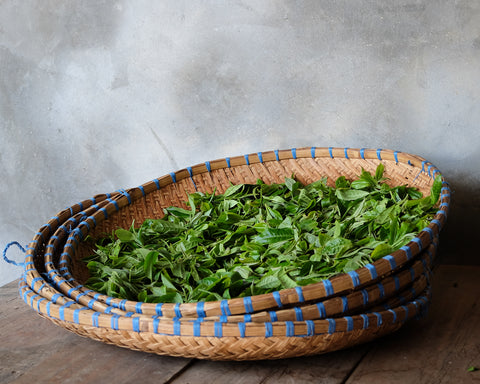

Controlled Harvesting
Harvesting the fresh buds from our ancient tea trees creates the highest quality tasting tea. This controlled harvesting also aids the continued health and longevity of our tea trees and the forest surrounding them. The larger dark leaves closer to the trunk of the tree provide the necessary energy the tea tree requires to continuously produce abundant high-quality shoots. Leaving this protective maintenance foliage layer of dark leaves allows our trees continue to produce the quality shoots needed to create tea.

What Leaf Size Tells Us
Harvesting only the buds from the trees also insures that the tree is not over plucked. This ensures the tree’s health and longevity. Over harvesting has unfortunately become a trend in Yunnan, making the camellia sinensis assamic’s leaves smaller over time. By sparingly harvesting ancient tea trees, you ensure that the maintenance foliage leaves remain large and the trees continue to be bountiful.
All of the images used in this post were photographed in Eastern Leaves tea forest located in Yunnan. The carefully selected light-green shoots were plucked at their prime by skillful harvesters. They then began their journey to become tea as we allowed the trees to begin sprouting next season’s fresh light-green buds.
For further reading on tea harvesting, please explore one of our previous posts: The Tea Harvest.





